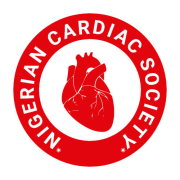

Author(s): Lars Oddershede,Jan Jesper Andreasen
Background: The greater saphenous vein is still frequently used as a conduit for coronary artery bypass grafting (CABG). Previously, veins were harvested through a single continuous skin incision, commonly referred to as open vein harvesting (OVH), while endoscopic vein harvesting (EVH) techniques have become increasingly popular. However, the postoperative consumption of healthcare resources remains uncertain. Therefore, the present study performed a systematic review, with meta-analysis, of outcomes relating to consumption of healthcare resources and clinical effectiveness following EVH and OVH for CABG.
Methods: A systematic search was performed in five databases. OVH was defined as the use of open harvesting techniques using a single continuous incision, and all studies comparing EVH to OVH for CABG were eligible.
Results: EVH was associated with increased duration of surgery, no difference in the length of stay in intensive care units, a reduced total length of stay in hospital, a reduced need for antibiotic treatment for leg wound infections, a reduced need for follow-up visit(s) at general practitioners/out-patient clinics, a reduced need for visit(s) by the homecare nurses, a reduced need for revision(s) of the leg wound, a reduced need for readmission(s) related to leg wounds complications and no difference in repeat cardiac catheterization(s). Furthermore, EVH reduced pain intensity approximately five days postoperatively, but not 30 days postoperatively. EVH did not increase the occurrence of mid-term myocardial infarction, recurrence of chest pain, repeat revascularization and mid-term allcause mortality.
Conclusions: EVH provides safe clinical outcomes compared to OVH while reducing the short-term postoperative resource consumption. This article provides a formal synthesis of the available data on clinical effectiveness and consumption of healthcare resources following EVH and OVH for CABG, hence enabling future investigation of the long-term cost-effectiveness of methods.